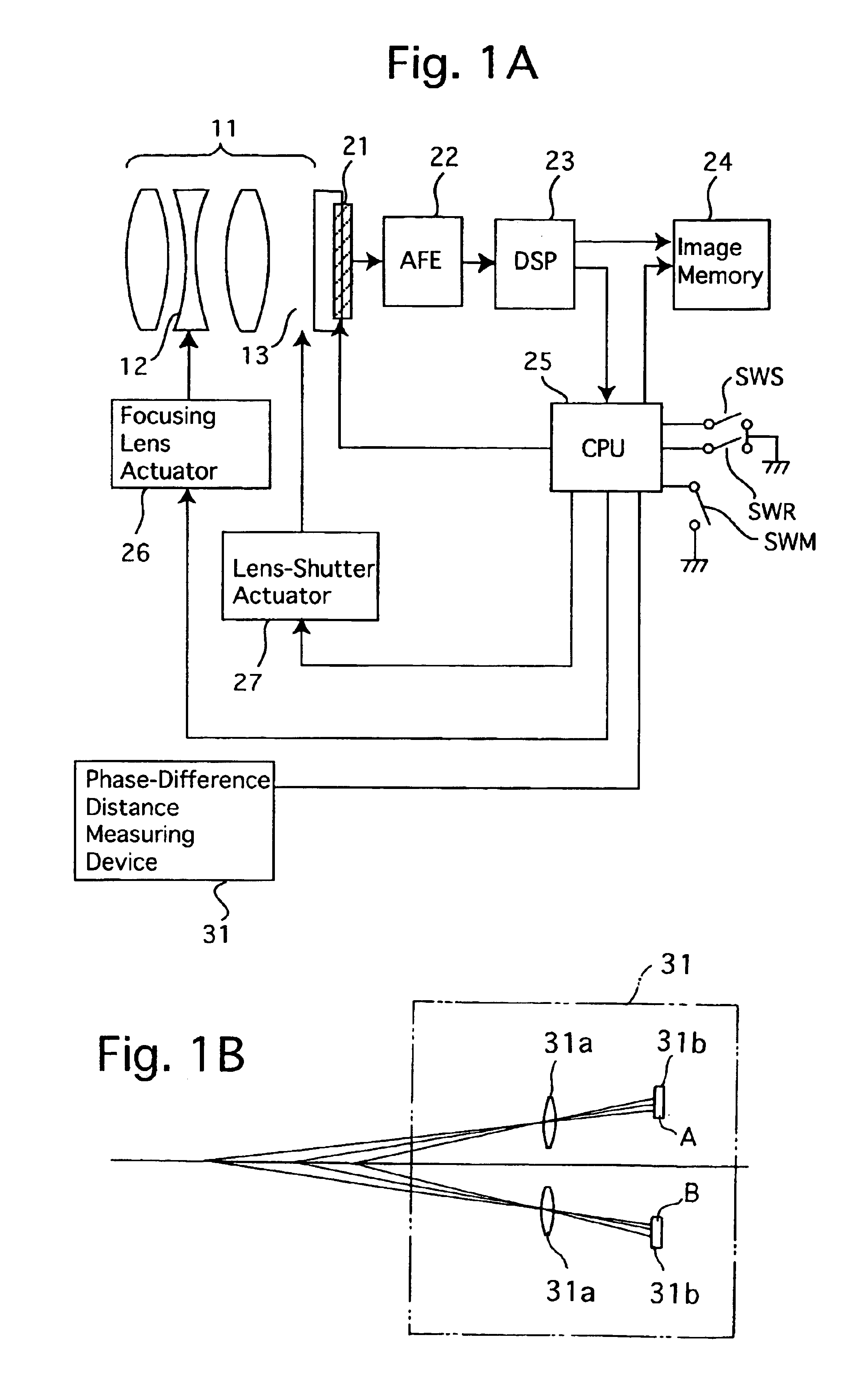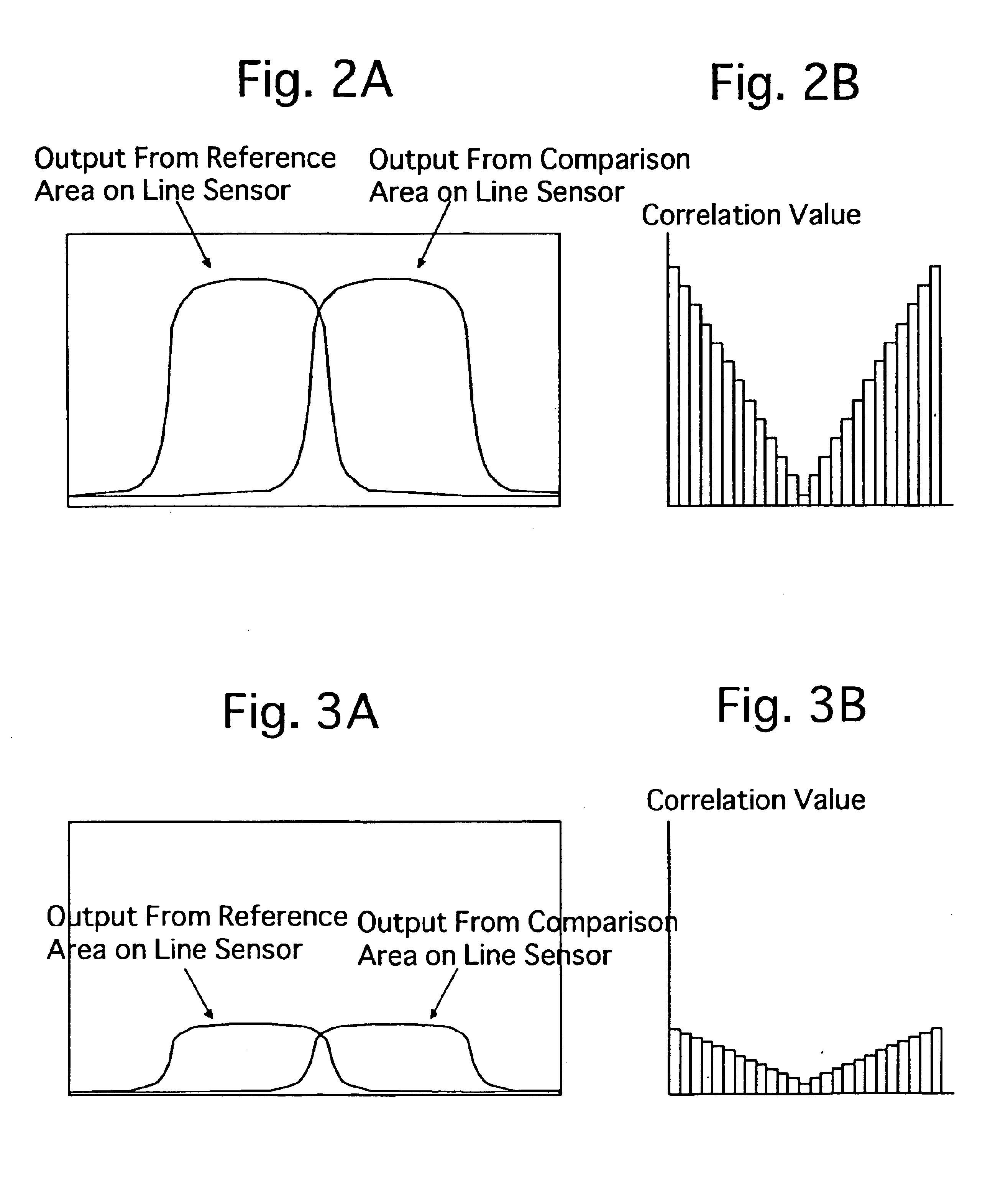Passive autofocus system for a camera
a camera and autofocus technology, applied in the direction of camera focusing arrangement, printers, instruments, etc., can solve the problems of small focus detection area, long time to determine, and inability to measure the distance of objects with a high degree of accuracy, etc., and achieve the effect of short tim
- Summary
- Abstract
- Description
- Claims
- Application Information
AI Technical Summary
Benefits of technology
Problems solved by technology
Method used
Image
Examples
Embodiment Construction
[0039]FIG. 1A shows a schematic circuit diagram of an embodiment of a passive autofocus system for a lens shutter electronic camera according to the present invention. The electronic camera is provided with a photographing lens 11, a CCD image sensor 21, an AFE (analog front end) 22, a DSP (digital signal processor) 23, an image memory 24 and a CPU 25. The CCD image sensor 21, which serves as an image pick-up device, receives a light bundle of an object image which is passed through the photographing lens 11 to convert the incident light of the object image into an electrical picture signal. The AFE 22, which serves as an image processor, processes the picture signal output from the CCD image sensor 21. The electronic camera is provided on a camera body thereof with a release button (not shown), and is further provided with a photometering switch SWS and a release switch SWR which are interconnected with the release button. The photometering switch SWS and the release switch SWR are...
PUM
 Login to View More
Login to View More Abstract
Description
Claims
Application Information
 Login to View More
Login to View More - R&D
- Intellectual Property
- Life Sciences
- Materials
- Tech Scout
- Unparalleled Data Quality
- Higher Quality Content
- 60% Fewer Hallucinations
Browse by: Latest US Patents, China's latest patents, Technical Efficacy Thesaurus, Application Domain, Technology Topic, Popular Technical Reports.
© 2025 PatSnap. All rights reserved.Legal|Privacy policy|Modern Slavery Act Transparency Statement|Sitemap|About US| Contact US: help@patsnap.com



